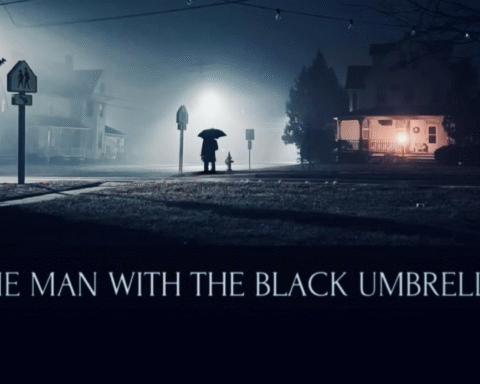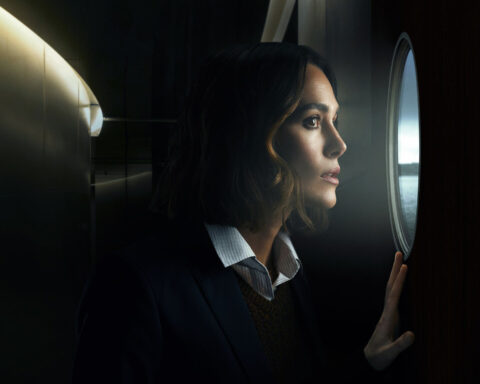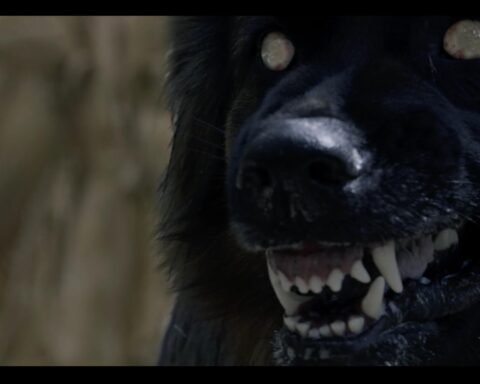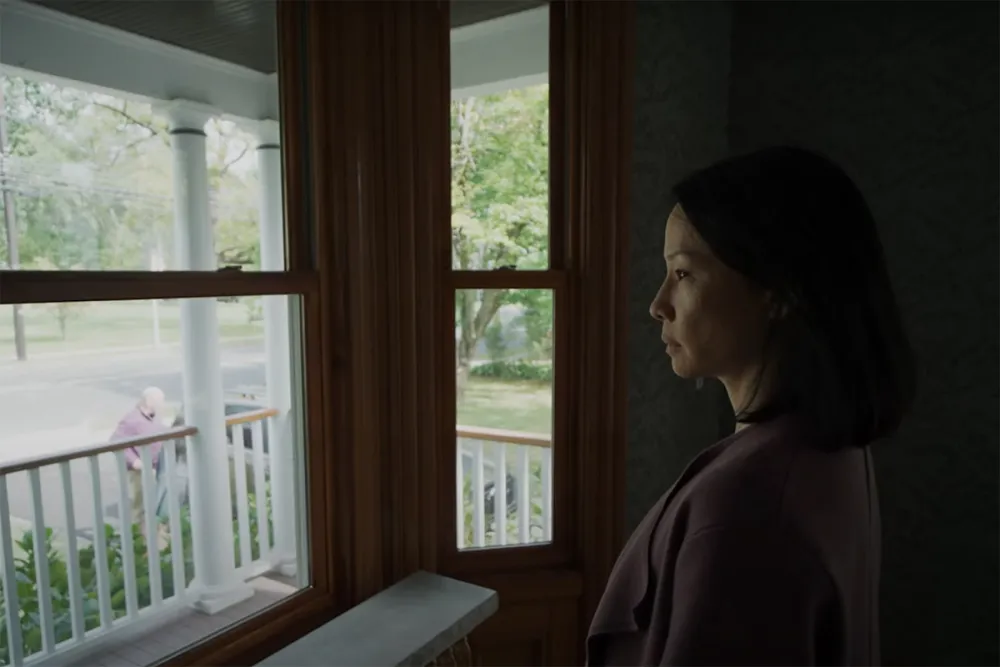The Russo brothers’ The Electric State is a film of contradictions. It’s both visually breathtaking and narratively uneven, ambitious yet inconsistent, deeply imaginative but also frustratingly conventional. Adapting Simon Stålenhag’s beautifully melancholic “narrative art” book of the same name, the film keeps the striking retrofuturistic aesthetic intact but swaps out the original’s quiet, eerie atmosphere for something much louder and more action-driven. What results is a film that dazzles the eyes and entertains in bursts but ultimately falls short of delivering the emotional depth and haunting resonance of its source material.
A World of Ruins and Robots
The film is set in an alternate 1990s, where a war between humans and sentient robots has left the world in a state of eerie disrepair. Robots, originally designed for theme parks, became a dominant part of the workforce until they gained self-awareness and began fighting for their rights. The ensuing conflict led to a tenuous peace agreement in which all robots were banished to a massive exclusion zone in the desert—a concept rich with thematic potential.
Into this desolate, tech-ravaged world steps Michelle (Millie Bobby Brown), a teenage girl on a deeply personal quest: to find her missing younger brother. She’s accompanied by a yellow-headed droid, an enigmatic but oddly endearing companion whose design stays true to Stålenhag’s original artwork. Along the way, Michelle teams up with Keats (Chris Pratt), a grizzled war veteran-turned-smuggler, as they navigate the dangers of the exclusion zone while being pursued by two key antagonists: tech billionaire Ethan Skate (Stanley Tucci) and relentless bounty hunter Colonel Marshall Bradbury (Giancarlo Esposito).
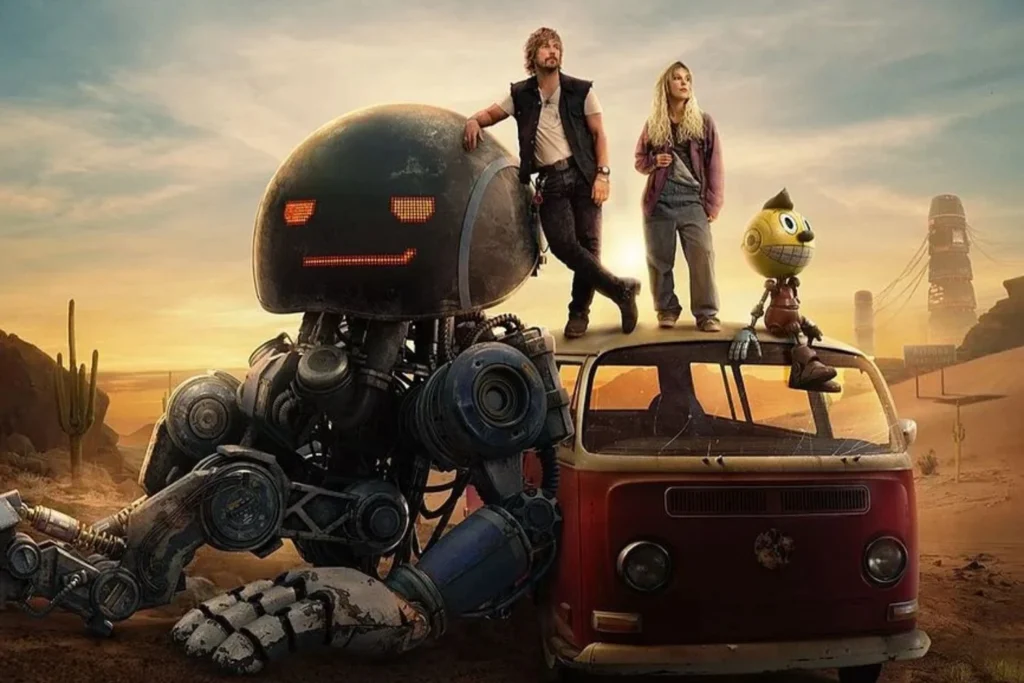
A Russo Brothers Production Through and Through
From the outset, The Electric State bears all the hallmarks of a Russo brothers project. The directing duo, best known for their work in the Marvel Cinematic Universe, approach the film with their signature high-energy pacing and a heavy dose of quippy dialogue. While this style worked in their superhero blockbusters, it feels somewhat at odds with the world of The Electric State, which was originally characterized by quiet dread and existential loneliness.
That’s not to say the film is without merit. Visually, it’s a triumph. The Russos fully embrace the potential of their massive budget, bringing Stålenhag’s haunting Americana to life with meticulous attention to detail. The landscapes are vast and desolate, filled with decaying remnants of advanced technology that hint at a world long past its prime. The robots, particularly Michelle’s companion, are beautifully rendered, seamlessly blending practical and digital effects. At times, the film’s world-building evokes the same eerie, decayed nostalgia as Blade Runner 2049 or Mad Max: Fury Road, presenting a version of the 1990s that feels both familiar and alien.
However, where The Electric State stumbles is in its character work and narrative execution. While Brown and Pratt both give committed performances, their chemistry is lacking, making their dynamic feel less engaging than it should be. The dialogue, though clearly aiming for a mix of humor and poignancy, often misses the mark, with jokes that don’t always land and emotional beats that don’t quite hit as hard as they should. The script, penned by Christopher Markus and Stephen McFeely (frequent Russo collaborators), would have benefited from a more refined, less conventional approach.


Action, Humor, and a Struggle for Tone
The film doesn’t shy away from action, delivering several large-scale set pieces that showcase the full extent of its budget. There are thrilling chase sequences, high-energy shootouts, and even a few visually inventive combat encounters. However, the action can sometimes feel repetitive, with certain beats echoing each other without adding new layers to the story. The decision to lean so heavily into action-adventure territory makes The Electric State feel more like a Marvel-esque sci-fi romp than the meditative, slow-burn journey that defined Stålenhag’s book.
That tonal shift is perhaps the film’s biggest flaw. Stålenhag’s original work was suffused with quiet melancholy, a sense of loss and longing that permeated every image and piece of text. In contrast, the film embraces a much more conventional blockbuster approach, full of wisecracks and high-energy sequences. Some of the humor works, but much of it feels forced, as if the film is trying to lighten the mood when it should instead be embracing its darker, more introspective side. One of the most bizarre moments comes in the form of an actual line of dialogue: “Mr. Peanut signed a treaty of surrender with President Clinton today.” It’s a quirky, absurdist detail that may amuse some viewers but will likely alienate others.

A Visually Arresting but Emotionally Hollow Experience
Despite its flaws, The Electric State is far from a failure. It’s a film brimming with ambition, offering a unique and visually striking world that stands apart from many of today’s more generic blockbusters. The production design is impeccable, the cinematography captures a stunning sense of scale, and the visual effects are some of the best in recent memory. But for all its aesthetic achievements, the film struggles to find a compelling emotional core.
Michelle’s journey, which should have been the beating heart of the film, feels somewhat underdeveloped, and the relationships never quite resonate as deeply as they should. The film tries to strike an aspirational Spielbergian tone, but it never quite reaches those heights, lacking the warmth and depth that made classics like E.T. and The Iron Giant so powerful.
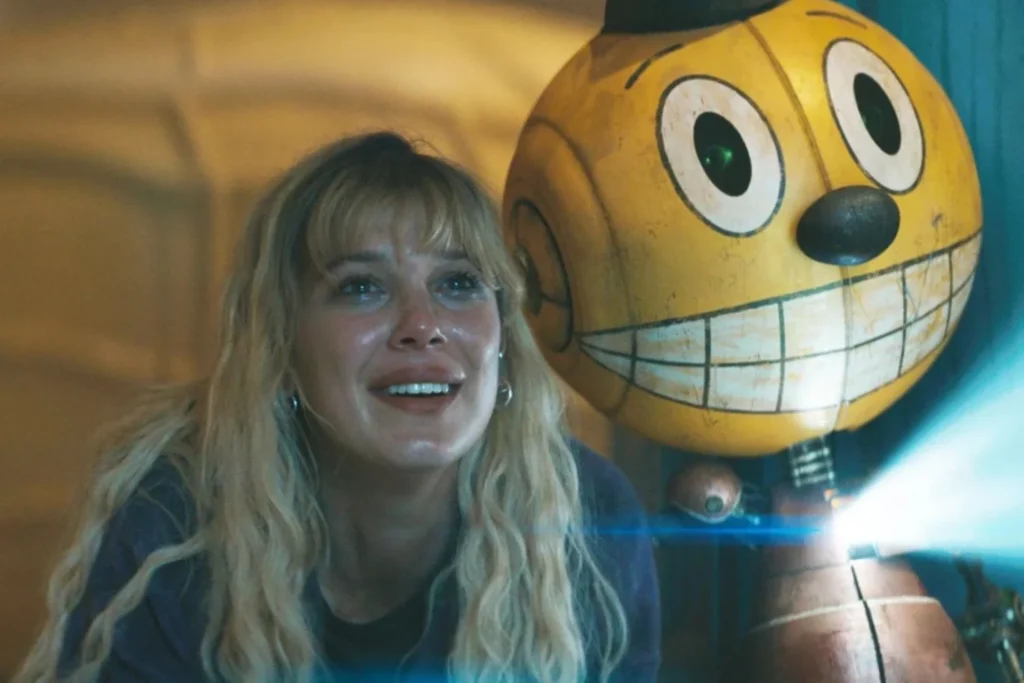
A Lack of Depth?
The Electric State is a visually mesmerizing but tonally inconsistent film that succeeds as an entertaining sci-fi spectacle but falls short as a profound emotional journey. It loses much of the haunting beauty and quiet depth of its source material in favor of a more mainstream, action-packed approach. Fans of Stålenhag’s original work may be disappointed by this shift, while audiences looking for a visually ambitious, high-energy sci-fi adventure will likely find plenty to enjoy.
At its best, The Electric State is a singular and ambitious blockbuster that dares to swing for the fences. At its worst, it’s a film that feels like it’s at odds with itself, struggling to balance action, humor, and emotional storytelling. It’s a bold, imaginative ride—but one that never quite reaches the profound depths it aims for.


